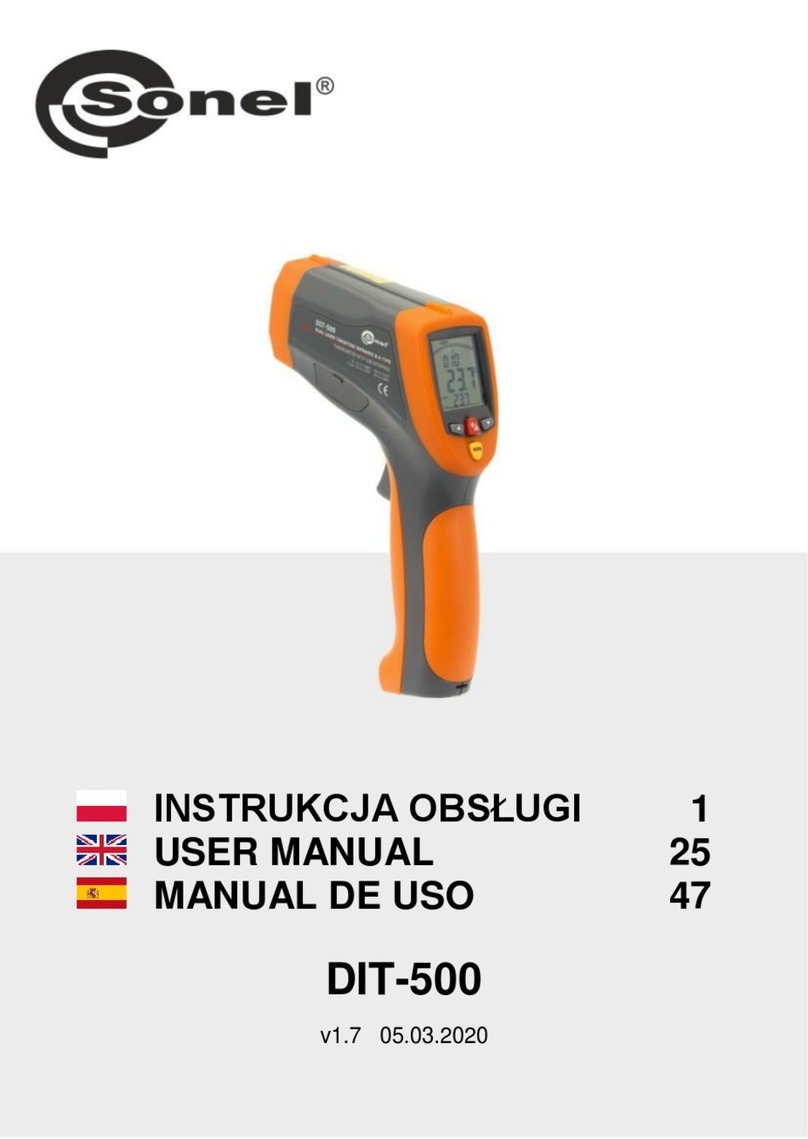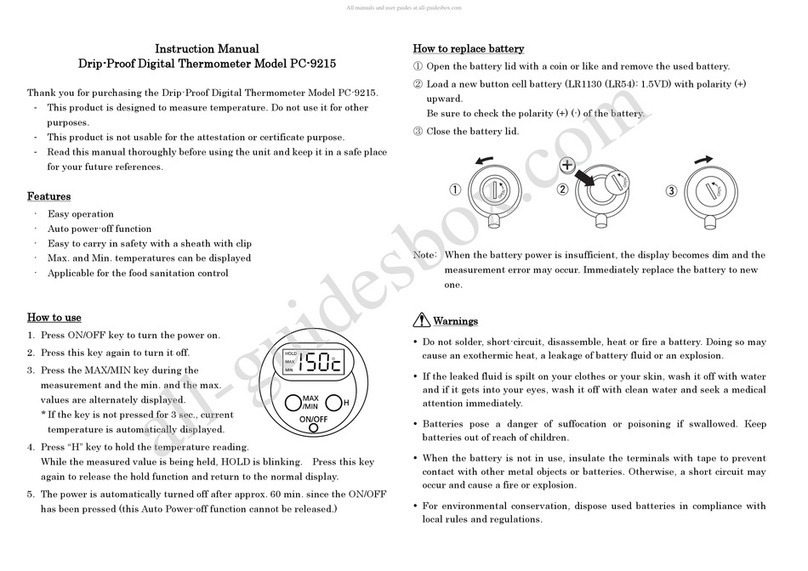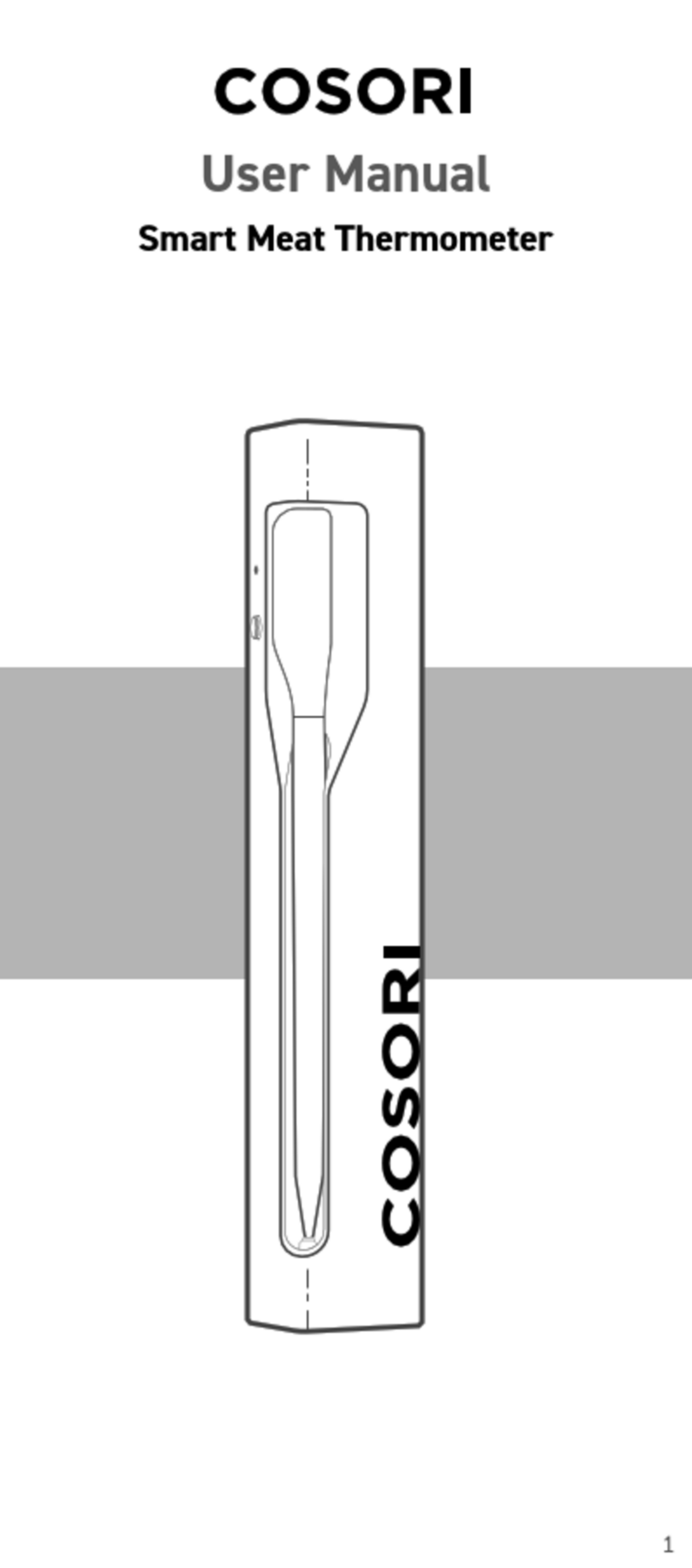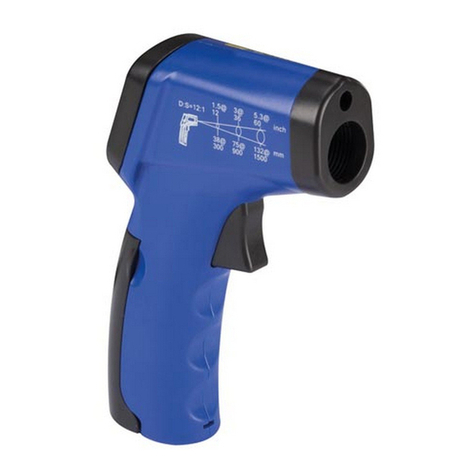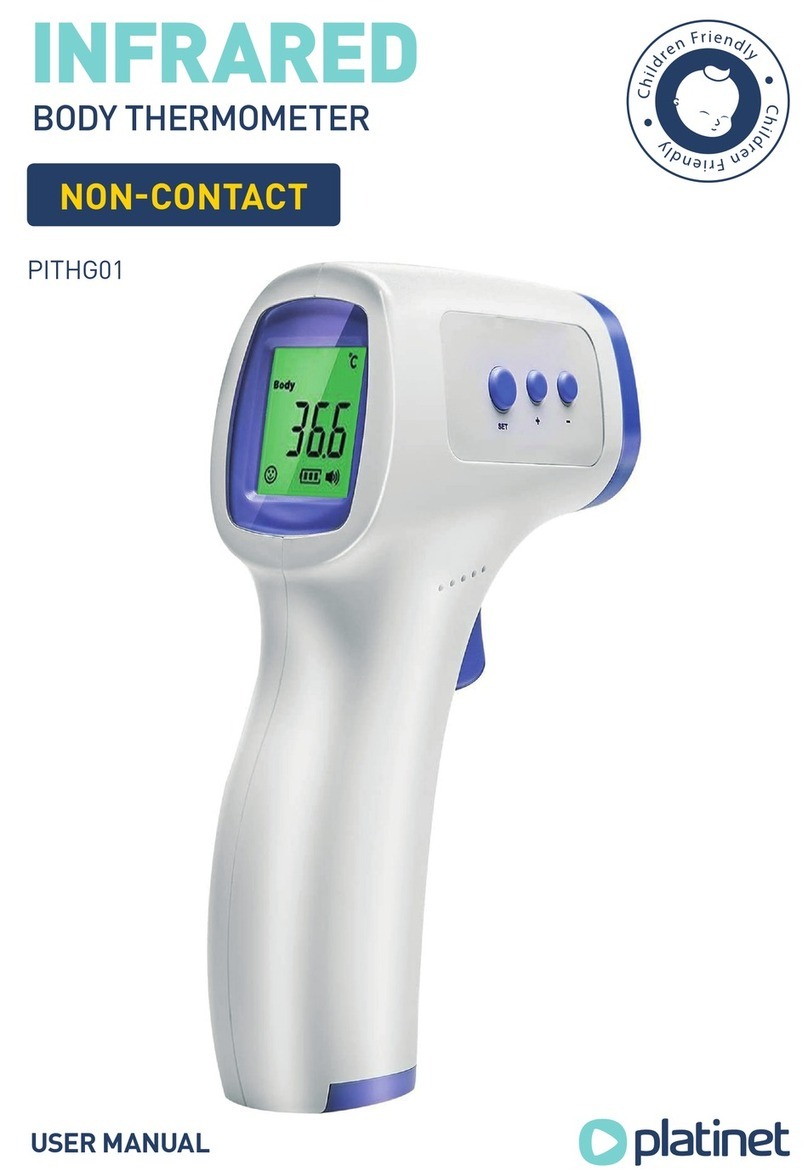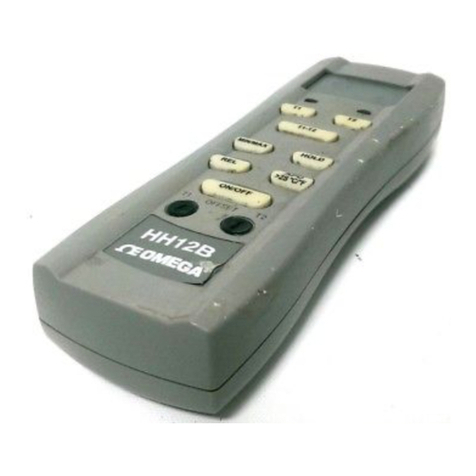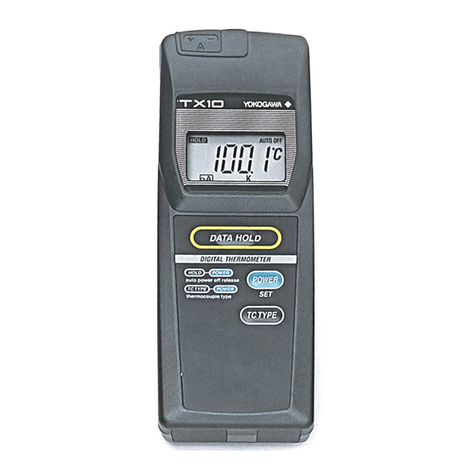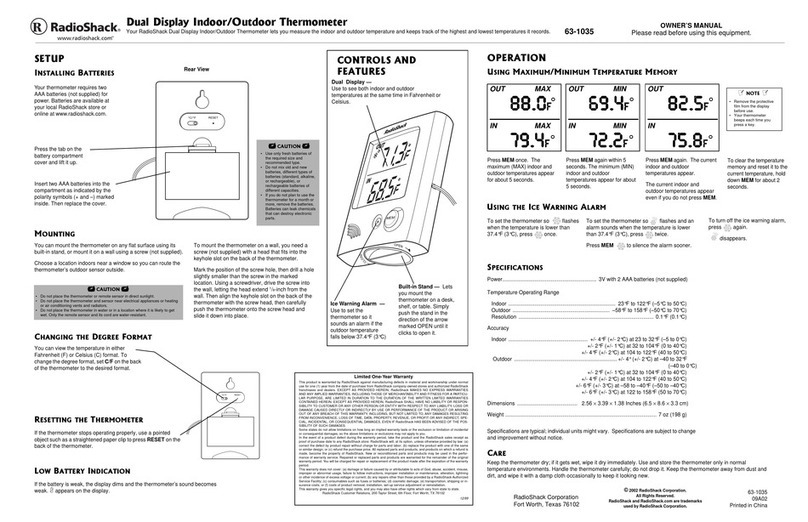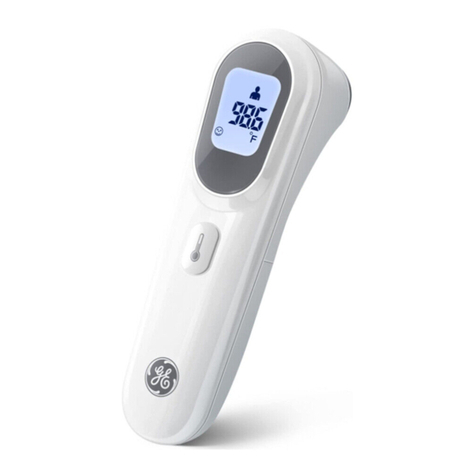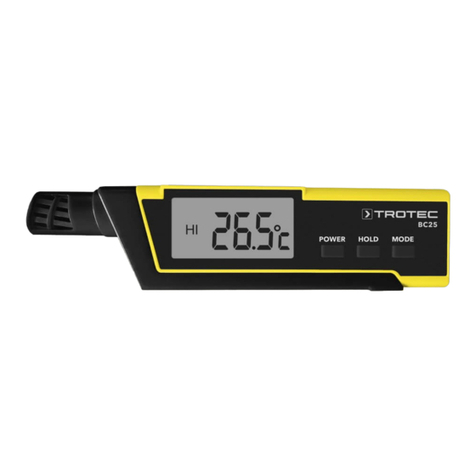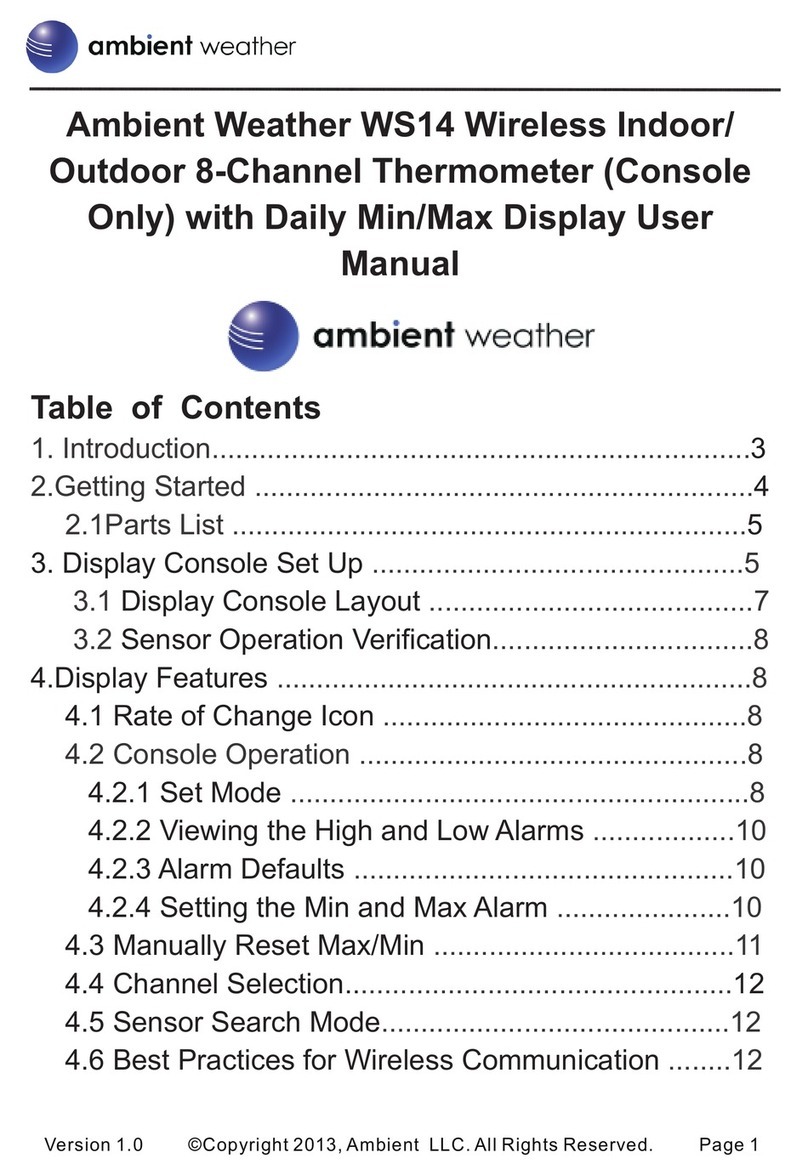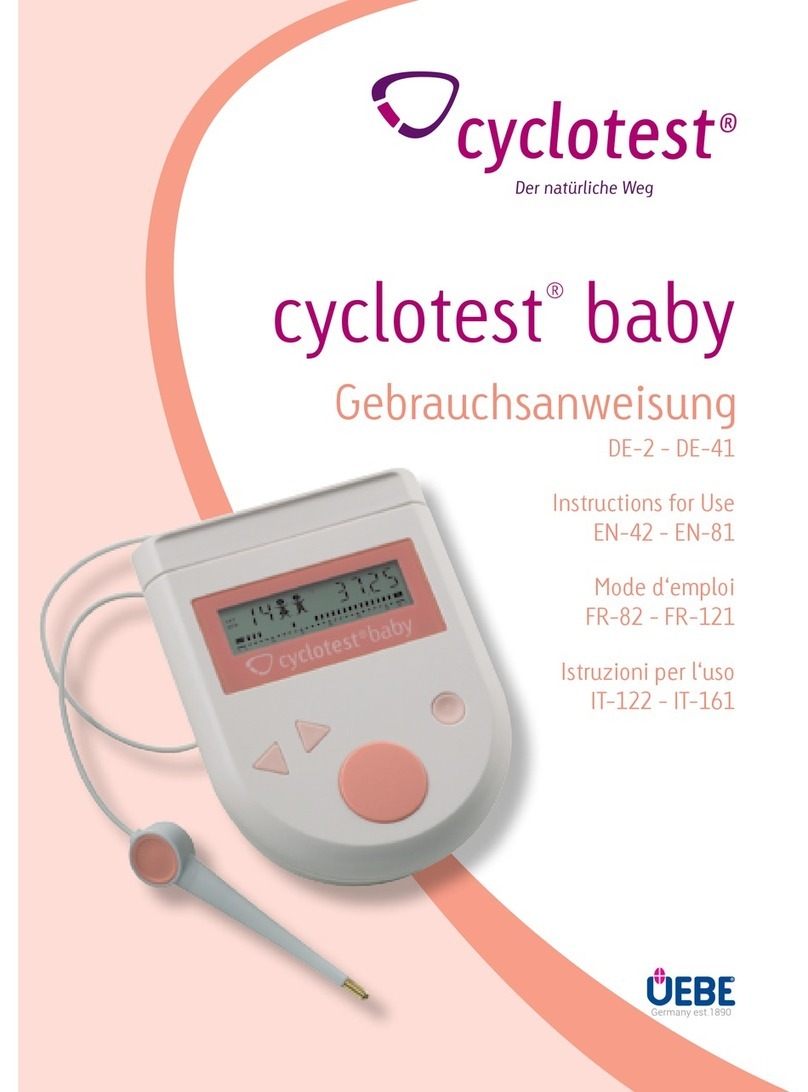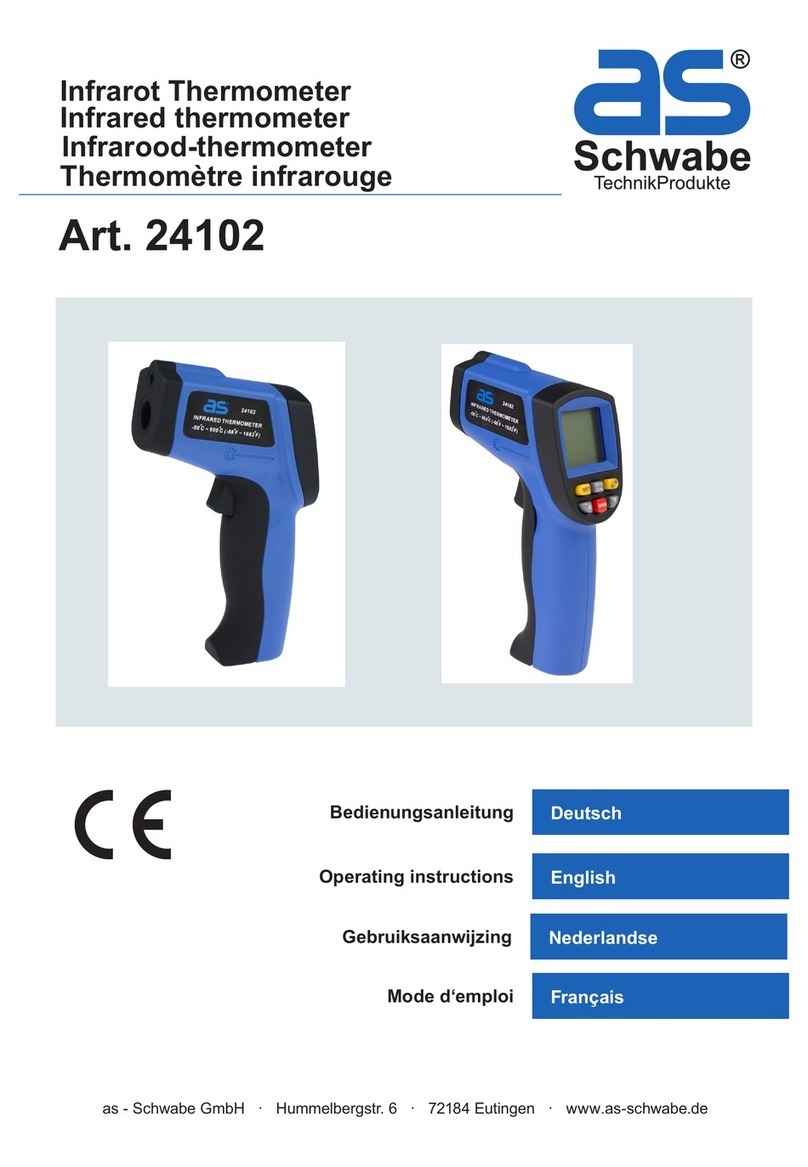Sonel DIT-500S User manual


1
USER MANUAL
NON-CONTACT INFRARED
THERMOMETER
DIT-500S
Version 1.01 05.03.2020

2
Main features of the DIT-500S device are the following:
rapid detection of temperature changes,
precise non-contact measurements,
dual laser lighting,
modern housing design,
automatic Data Hold,
ºC / ºF switch,
emissivity digitally adjustable from 0.10 to 1.00,
MAX, MIN, AVG, DIF temperature displays,
backlight LCD display,
automatic selection range
display resolution 0.1ºC (0.1ºF),
trigger lock,
set high and low alarms,
data logger (LOG),
transmit data to pc with USB.
WIDE RANGE APPLICATION:
Temperature measurements of electric devices, food prepara-
tion, safety and fire inspectors, plastic molding, asphalt, marine and
screen printing, measure ink and dryer temperature, Diesel and
fleet maintenance.

DIT-500S –USER MANUAL
3
1Introduction..........................................................5
2Safety ....................................................................6
3Functional description ........................................7
3.1 Device description.................................................... 7
3.2 LCD symbols............................................................ 8
3.3 Buttons..................................................................... 9
3.4 Distance and spot size............................................. 9
4How it works.......................................................10
5Measurement operation ....................................12
6Functional design ..............................................13
6.1 Functionality........................................................... 13
6.2 Functions of MODE button..................................... 13
6.2.1 MAX, MIN, DIF, AVG display......................................15
6.2.2 Emissivity (
) adjustment............................................15
6.2.3 Continuous measurement (LOCK) on/off....................15
6.2.4 High alarm (HAL) on/off..............................................15
6.2.5 HAL adjustment .........................................................15
6.2.6 Low alarm (LAL) on/off...............................................15
6.2.7 LAL adjustment..........................................................15
6.2.8 OC/OF .........................................................................15
6.3 Data logger............................................................. 16
6.3.1 Saving data to memory ..............................................16
6.3.2 Recalling data from memory.......................................16
6.3.3 Memory clear function................................................16
6.3.4 USB function..............................................................17
7Battery replacement ..........................................17
8Cleaning and maintenance ...............................18
9Storage................................................................18

DIT-500S –USER MANUAL
4
10 Dismantling and utilization...............................18
11 Technical data....................................................19
12 Standard accessories........................................20
13 Manufacturer ......................................................21
14 Laboratory services...........................................22

DIT-500S –USER MANUAL
5
1 Introduction
Thank you for purchase of the IR Thermometer DIT-500S. This
is capable of non-contact (infrared) temperature measurements at
the touch of a button. The built-in laser pointer increases target ac-
curacy while the backlight LCD and handy push-buttons combine
for convenient, ergonomic operation.
The Non-contact Infrared Thermometers can be used to meas-
ure the temperature of objects’ surface that is improper to be meas-
ured by traditional (contact) thermometer (such as moving object,
the surface with electricity current or the objects which are uneasy
to be touched.)
Proper use and care of this meter will provide years of reliable
service.
In the present manual we apply three kinds of warnings. These
are texts in frames, which describe possible dangers both for the
user and the meter itself. The messages starting from the word
‘WARNING:’ describe situations which imply a risk for life or health
should the recommendations presented in the present manual not
be observed. The word ‘ATTENTION!’ introduces a description of a
situation where non-observance of the recommendations presented
in the present manual may imply damage for the meter. Indications
of possible problems are preceded by the word ‘Attention:’.
WARNING:
Before using the instrument acquaint yourself with the pre-
sent manual and observe the safety regulations and recom-
mendations specified by the manufacturer.

DIT-500S –USER MANUAL
6
2 Safety
In order to guarantee proper operation and correctness of the
obtained results it is necessary to observe the following recom-
mendations:
Use extreme caution when the laser beam is turned on.
Do not let the beam enter your eye, another person’s eye or the
eye of an animal.
Be careful not to let the beam on a reflective surface strike your
eye.
Do not allow the laser light beam impinge on any gas which can
explode.
It is prohibited to operate the meter:
If it is damaged and completely or partially out of order.
If it has been stored for an excessive period of time in inad-
equate conditions (e.g. if it is humid).
Before commencing a measurement make sure the correct
measurement function has been selected.
Repairs must be realised solely by an authorised service work-
shop.

DIT-500S –USER MANUAL
7
3 Functional description
3.1 Device description
①IR sensor
②LCD Display
③TYPE K IN
④USB IN
⑤LIGHT/LASER BUTTON
⑥UP BUTTON
⑦DOWN BUTTON
⑧MODE BUTTON
⑨MEASUREMENT TRIGGER
⑩BATTERY COVER
⑪HANDLE GRIP
⑫BATTERY COVER BUTTON

DIT-500S –USER MANUAL
8
3.2 LCD symbols
①Measuring indication
②Data hold
③Laser ”on” symbol
④LOCK symbol
⑤Analogue scale
⑥MAX, MIN, AVG, DIF symbols
⑦Temperature values for the MAX, MIN, AVG, DIF
⑧Current temperature value
⑨Data logger symbol
⑩Emissivity () symbol
⑪Probe Type K symbol
⑫OC or OF symbols
⑬High alarm (HAL) and low alarm (LAL) symbols
⑭USB symbol (transmit data to PC)
⑮Low battery symbol
⑯Emissivity value, temperature from Type K probe or tempera-
ture from memory

DIT-500S –USER MANUAL
9
3.3 Buttons
① Laser/Backlight on/off button
② Down button (for , HAL, LAL)
③ Up button (for , HAL, LAL)
④ Cyclic MODE button
3.4 Distance and spot size
As the distance (D) from the object increases, the spot size (S)
of the area measured by the unit becomes larger. The relationship
3
4
2
1

DIT-500S –USER MANUAL
10
between distance and spot size for each unit is listed below. The
focal point of unit is 914mm (36”).
4 How it works
Infrared
Infrared thermometers measure the surface temperature of an
object. The unit’s optics sense emitted, reflected, and trans-
mitted energy, which is collected and focused onto a detector.
The unit’s electronics translate the information into a tempera-
ture reading, which is display on the unit. In units with a laser,
the laser is used for aiming purposes only.
Field of View
Make sure that the target is larger than the unit’s spot size.
The smaller the target, the closer you should be to it. When
accuracy is critical, make sure the target is at least twice as
large as the spot size.
Distance and spot size
As the distance (D) from the object increases, the spot size
(S) of the area measured by the unit becomes larger.
Locating a hot Spot

DIT-500S –USER MANUAL
11
To find a hot spot aim the thermometer outside the area of in-
terest, then scan across with an up and down motion until you
locate hot spot.
Reminders
- Not recommended for use in measuring shiny or polished
metal surfaces (stainless steel, aluminum, etc.). See Emis-
sivity.
- The unit cannot measure through transparent surfaces such
as glass. It will measure the surface temperature of the glass
instead.
- Steam, dust, smoke, etc., Can prevent accurate measure-
ment by obstructing the unit’s optics.
Emissivity
Emissivity is a term used to describe the energy-emitting
characteristics of materials.
Most (90% of typical applications) organic materials and
painted or oxidized surfaces have an emissivity of 0.95 (pre-
set in the unit). Inaccurate readings will result from measuring
shiny or polished metal surfaces. To compensate, cove the
surface to be measured with masking tape or flat black paint.
Allow time for the tape to reach the same temperature as the
material underneath it. Measure the temperature of the tape
or painted surface.
The DIT-500S can compensate additional error of emissivity
other than 0.95. In this purpose, enter correct value of meas-
ured substance emissivity.
Emissivity values
Substance
Thermal
emissivity
Substance
Thermal
emissivity
Asphalt
0,90 to 0,98
Cloth (black)
0,98
Concrete
0,94
Human skin
0,98
Cement
0,96
Lather
0,75 to 0,80
Sand
0,90
Charcoal
(powder)
0,96
Earth
0,92 to 0,96
Lacquer
0,80 to 0,95
Water
0,92 to 0,96
Lacquer (matt)
0,97

DIT-500S –USER MANUAL
12
Ice
0,96 to 0,98
Rubber (black)
0,94
Snow
0,83
Plastic
0,85 to 0,95
Glass
0,90 to 0,95
Timber
0,90
Ceramic
0,90 to 0,94
Paper
0,70 to 0,94
Marble
0,94
Chromium oxides
0,81
Plaster
0,80 to 0,90
Copper oxides
0,78
Mortar
0,89 to 0,91
Iron oxides
0,78 to 0,82
Brick
0,93 to 0,96
Textiles
0,90
5 Measurement operation
Hold the meter by its handle grip and point it toward the sur-
face to be measured.
Pull and hold the trigger to turn the meter on and begin testing.
The display will light if the battery is good. Replace the battery
if the display does not light.
Release the trigger and the HOLD display icon will appear on
the LCD indicating that the reading is being held. In HOLD sta-
tus, press the ①button to turn on/off the laser and turn on/off
backlight.
The meter will automatically power down after approximately 7
seconds after the trigger is released (unless the unit is locked
on).
Note: Measurement considerations
Holding the meter by its handle, point the IR Sensor toward the
object whose temperature is to be measured. The meter automati-
cally compensates for temperature deviations from ambient tem-
perature. Keep in mind that it will take up to 30 minutes to adjust to
wide ambient temperatures are to be measured followed by high
temperature measurements.
Some time (several minutes) is required after the low (and be-
fore the high) temperature measurements are made. This is a result
of the cooling process, which must take place for the IR sensor.

DIT-500S –USER MANUAL
13
6 Functional design
6.1 Functionality
In the measuring time, pressing MODE keys to display MAX
value, MIN value, DIF value , AVG value or LOG value.
In the measuring time, if the Type K thermocouple is not
connected, you can adjust by pressing up/down key.
In the HOLD mode, you can adjust OC/OF by pressing up/down
key.
You can turn on/off the backlight/laser by pressing
LIGHT/LASER key ① at any state.
To set values for the high alarm (HAL), low alarm (LAL) and
emissivity (), press the MODE button until the appropriate code
appears in the display, press the UP and DOWN buttons to
adjust the desired values.
6.2 Functions of MODE button
In the HOLD mode, press the mode button also allows you to
access the set state: MAX, MIN, DIF, AVG or LOG display ->
emissivity () -> lock on/off (continuos measuremet) -> high alarm
(HAL) on/off -> HAL adjustment -> low alarm (LAL) on/off -> LAL
adjustment -> OC/OF.
Each time you press set you advance through the mode cycle.
The diagram shows the sequence of functions in the mode cycle.

DIT-500S –USER MANUAL
14
LAL on/off
HAL adjustment
MAX, MIN, DIF, AVG, LOG
OC/OF
LAL adjustment
adjustment
LOCK on/off
HAL on/off
MODE
Fig. 1. Sequence of MODE button.

DIT-500S –USER MANUAL
15
6.2.1 MAX, MIN, DIF, AVG display
MAX (maximum) - Maximum value of measurement.
MIN (minimum) - Minimum value of measurement.
DIF (difference) - Difference value of measurement.
AVG (average) - Average value of measurement.
Adjustable display by pressing UP/DOWN button
6.2.2 Emissivity () adjustment
The emissivity () digitally adjustable from 0,10 to 1,0 by
pressing UP/DOWN button.
6.2.3 Continuous measurement (LOCK) on/off
The lock mode is particularly useful for continuous monitoring of
temperatures. Press the UP button or DOWN button to turn on or
off. Press the measurement trigger to confirm the lock
measurement mode. The IR thermometer will continuously display
the temperaure until press again the measurement trigger.
6.2.4 High alarm (HAL) on/off
Turn on or off high alarm by pressing UP/DOWN button.
6.2.5 HAL adjustment
Please adjust high alarm value by pressing UP/DOWN button.
6.2.6 Low alarm (LAL) on/off
Turn on or off low alarm by pressing UP/DOWN button.
6.2.7 LAL adjustment
Please adjust low alarm value by pressing UP/DOWN button.
6.2.8 OC/OF
Pressing UP/DOWN button to change the temperature unit (℃
or ℉).

DIT-500S –USER MANUAL
16
6.3 Data logger
6.3.1 Saving data to memory
Your thermometer is capable of storing up to 100 measure-
ments.
To store data from an infrared reading, pull the trigger. While
holding the trigger, press the MODE button until LOG appears in
the lower left corner of the display (a log location number will be
shown in upper display).
Aim the unit at the target area you want to record and press the
LASER/BACKLIGHT button. The recorded temperature will appear
in the lower display. To select another log location, press the UP or
DOWN keys.
If no temperature has been recorded in the shown LOG loca-
tion, four dashes will appear in the lower display.
6.3.2 Recalling data from memory
To recall stored data after the unit shuts off, press the MODE
button until blinking MAX appears on the LCD. Press the UP or
DOWN button to call blinking LOG symbol on LCD. Press trigger to
accept.
A LOG location number will be shown on upper display and the
stored temperature for that location will be display on lower display.
To move to another LOG location, press the UP or DOWN keys.
6.3.3 Memory clear function
This function can only be used when the unit is in LOG mode.
You should only use the LOG clear function if you want to clear all
the Log location data that is stored in unit’s memory. The “LOG
clear” function works as follows:
while in LOG mode, press and hold the trigger, and then press
the DOWN arrow button until you reach LOG location “000”.
Note: This can only be done when the trigger is pulled. LOG loca-
tion “000” cannot be accessed, by using the UP arrow button.
when LOG location “000” shows in the display, press the
LASER/BACKLIGHT button. A tones will sound, and the LOG

DIT-500S –USER MANUAL
17
location will automatically change to “001”, signifying that all
data locations have been cleared.
6.3.4 USB function
This device affords transmitting the IR and Type K
measurement data to the PC via USB.
For turn on or off USB function: press LIGHT/LASER button
until “USB” sign appears in the right lower corner of the LCD. The
USB function turn on. Then, press the LIGHT/LASER button again
until “USB” sign disappears. Thus, the USB function shut off.
7 Battery replacement
As battery power is not sufficient, LCD will display “ ”. Re-
placement with one new battery type 9V is required.

DIT-500S –USER MANUAL
18
Attention:
When making measurements with a battery's mnemonic on,
one must take into account additional indefinite measure-
ment uncertainty or unstable working of the meter.
Open battery cover, then take out the battery from instrument
and replace with a new 9-Volt battery and place the battery cover
back.
8 Cleaning and maintenance
Repairs or service are not covered in this manual and should
only be carried out by qualified trained technician.
Periodically, wipe the body with a dry cloth. Do not use
abrasives or solvents on this instrument.
For service, use only manufacturer’s specified parts.
9 Storage
In the case of storage of the device, the following recommenda-
tions must be observed:
Make sure the meter and its accessories are dry.
In the case the meter is to be stored for a prolonged period of
time, the batteries must be removed from the device.
10 Dismantling and utilization
Worn-out electric and electronic equipment should be gathered
selectively, i.e. it must not be placed with waste of another kind.
Worn-out electronic equipment should be sent to a collection
point in accordance with the law of worn-out electric and electronic
equipment.
Before the equipment is sent to a collection point, do not dis-
mantle any elements.
Observe the local regulations concerning disposal of packages,
worn-out batteries and accumulators.
Table of contents
Other Sonel Thermometer manuals



